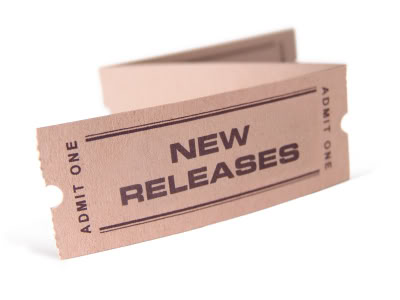ALL4’s: Is That Your Final Answer?
Last Month’s Answer and Winner:
We received several responses to our February edition of “Is That Your Final Answer” and George Woods was the first to provide the answer for which we were looking. The performance standards apply to new, modified, or reconstructed emission units. There are specific criteria that apply to the terms “new,” “modified,” and “reconstructed” and very often the applicability of these terms are not triggered even when a physical change is made to an emission unit. However, under Section 111(d) of the Clean Air Act, if for a specific source category, U.S. EPA develops a performance standard for a pollutant that is not a criteria pollutant (e.g., SO2, PM, NOx, etc.) and that is not a HAP then U.S. EPA is required to establish an emission guideline for the emission source. The emission guidelines are enforced via a state plan and apply to the source category after the state plan is approved by U.S. EPA. The key difference is that the emission guidelines apply to an emission unit in the source category regardless or whether the emission unit is new, modified, or reconstructed. For GHG, it is U.S. EPA’s plan to have NSPS emission guidelines apply to Subpart Da EGUs.
Question: 
ALL4’s group of air quality modelers were conversing at the lunch table the other day and it seemed as if the entire conversation was in code with acronyms like PBL, ISC, NAD88, Deciviews, and AERMOD being used. A project engineer overhearing the conversation finally was moved to ask, “Of all of the terms that I have heard in the last five minutes, AERMOD is the only term that I recognize. What does AERMOD stand for?” One of the air quality modelers replied, “Well actually, AERMOD is a contraction of an even longer acronym. The full name of the AERMOD air dispersion model is…” What did the air quality modeler tell the project engineer?
Answer:
Please e-mail your answer to final.answer@all4inc.com. Include in the e-mail your name, answer, and address (to receive your prize).
The final answer feature of 4 The Record is designed to test your knowledge across the environmental field, quiz you on the building blocks of air quality rules, stump you on ALL4 general trivia, and challenge you with brain teasers that have perplexed us. The first correct answer e-mailed to us will qualify the respondent for free ALL4 gear and will enter the winner in our end-of-the year “Final Answer Championship.” The subsequent month’s 4 The Record will identify the winner and the correct answer from the previous month’s question. You must be an active subscriber of 4 The Record to win a monthly prize and be eligible for the championship prize. ALL4 employees and family members are not eligible to compete. Hope you enjoy this feature and good luck!
Source Specific Ambient SO2 Monitoring vs. Air Quality Modeling for 1-Hour SO2 NAAQS Designations
As part of the preamble of the new 1-hour sulfur dioxide (SO2) National Ambient Air Quality Standard (NAAQS), U.S. EPA outlined new NAAQS implementation procedures that will require certain facilities to be evaluated using refined air dispersion modeling with U.S. EPA’s guideline air dispersion model (i.e., AERMOD). U.S. EPA has indicated that a hybrid approach of ambient pollutant monitoring and air quality modeling will be used to determine county-specific NAAQS attainment and nonattainment designations for the 1-hour SO2 NAAQS. As part of this designation process, facilities may be requested to perform site-specific air quality modeling for SO2 to assess the facility’s impact relative to the 1-hour SO2 NAAQS when combined with impacts from other local facilities.
The conservatism built into U.S. EPA’s guideline
Stay tuned to future editions of 4 The Record for articles discussing the pros and cons of conducting source specific SO2 ambient monitoring to assist your state in determining the attainment designation of your county. ALL4’s Ambient Group is responsible for air quality modeling, meteorological monitoring, and ambient monitoring. In addition to conducting NAAQS modeling studies for clients related to the new SO2 standard, our Ambient Group is currently assisting clients perform everything from confidential investigative short-term SO2 ambient monitoring programs to state approved SO2 ambient monitoring programs designed to assist your state in its 1-hour SO2 NAAQS implementation process.
Pennsylvania Plan Approval Expiration Date/Duration Revisions
Facilities in Pennsylvania should be aware of a recent change in the interpretation of standard Plan Approval (i.e., construction permit) language regarding Plan Approval duration and “shakedown” periods. The change impacts the temporary operation of a new, or newly modified, source authorized under a Plan Approval and has caught a number of companies by surprise. In approximately 2008, a new condition in Plan Approvals issued by the Pennsylvania Department of Environmental Protection (PADEP) was added into Section B, General Plan Approval Requirements. Condition #003(e) of that Section now automatically shortens the expiration date of a Plan Approval to 180 days from first operation under the shakedown provisions of 25 Pa. Code §127.12b. Interestingly this condition is not based on regulatory language, but is a new interpretation by PADEP of the meaning of a “shakedown period.” Companies need to note that this language change is present in all recently issued Plan Approvals.

Relief! U.S. EPA Announces Extension of 2010 Greenhouse Gas Report Filing Deadline
On March 1, 2011, U.S. EPA announced that the original March 31, 2011 deadline for 2010 greenhouse gas (GHG) emissions reporting under 40 CFR Part 98 (Mandatory Reporting of Greenhouse Gases Rule) would be extended. U.S. EPA’s announcement did not indicate how long the extension would be, stating only that more details on the extension will be provided in the coming weeks. Since the reporting deadline of March 31 is stipulated in the Part 98 rule, it is expected that U.S. EPA must, at a minimum, issue an interim final rule to make the extension effective prior to March 31 of this year.
As recently as February 28, 2011, the official position of U.S. EPA (as stated on their website) was that the March 31, 2011 deadline remained in effect, even though no details of the data uploading features of U.S. EPA’s electronic Greenhouse Gas Reporting Tool (e-GGRT), which facilities must use to submit the required reports, had been made available. U.S. EPA’s March 1, 2011 announcement states that the extension of the reporting deadline is necessary to allow U.S. EPA to further test the e-GGRT system and to give industry the opportunity to test the tool, provide feedback, have sufficient time to receive training, and become familiar with the tool prior to the reporting date. According to U.S. EPA, the reporting features of e-GGRT are now slated to be released this summer, which would indicate that the new reporting deadline could be as far away as late summer or fall of this year.

4 The Record subscribers may recall reading in previous editions that ALL4 would be providing a 24-hour Hot-Line for e-GGRT reporting support in the days leading up to the March 31, 2011 reporting deadline. Although this will no longer take place in March, ALL4’s Hot-Line will be available to 4 The Record subscribers in the days leading up to whatever new reporting deadline is established. Look for details from ALL4’s Climate Change Team closer to that time. In the meantime, ALL4’s Climate Change Team is available to assist with all ongoing efforts related to U.S. EPA’s GHG regulations.
They’re Here!
On February 23, 2011 U.S. EPA released on their website pre-publication versions of four (4) new rules that are all interrelated and that will affect boilers and process heaters everywhere. The rules will reduce emissions of toxic air pollutants from boilers and process heaters located at major sources of hazardous air pollutant (HAP) emissions (Boiler MACT – Major Sources), as well as area sources of HAP emissions (Boiler MACT – Area Sources). In addition, U.S. EPA has finalized a rule to reduce toxic air pollutants from Commercial and Industrial Solid Waste Incinerators (CISWI).

ALL4 recognizes that these new rules will impact almost all of the regulated community and we have assembled a team to analyze the impact that each of these rulemakings will have on boilers and process heaters everywhere. Stay tuned for more in-depth analyses in ALL4’s 4 The Record and 4 The Record Extra!. Additionally, please see the information provided in this month’s 4 The Record about our April 14, 2011 “4 Rules Webinar.”
What’s a Solid Waste? U.S. EPA Finalizes the Definition of Solid Waste (DSW) Rule
The final Definition of Solid Waste (DSW) rule was signed by U.S. EPA on February 21, 2011 and is expected to be published in the Federal Register in March 2011. The purpose of the DSW rule is to clarify which non-hazardous secondary materials are, or are not, Resource Conservation and Recovery Act (RCRA) Subtitle D solid wastes when burned as fuel or ingredients in combustion units. U.S. EPA recognizes that the DSW rule will significantly narrow the current universe of non-hazardous fuels allowed to be burned in combustion units. Many materials that have been historically combusted as alternate fuels or used as alternate ingredients will not likely meet the non-waste determination requirements of the DSW rule. As a result, such materials will be reclassified as solid waste, and in accordance with Section 129 of the Clean Air Act, may only be combusted in a unit that is regulated under the Standards of Performance for New Stationary Sources and Emission Guidelines for Existing Sources: Commercial and Industrial Solid Waste Incineration Units (CISWI) rule. Both the DSW and CISWI rules were finalized with the infamous National Emission Standards for Hazardous Air Pollutants for Major Sources: Industrial, Commercial, and Institutional Boilers and Process Heaters (Major Source Boiler Rule) and National Emission Standards for Hazardous Air Pollutants for Area Sources: Industrial, Commercial, and Institutional Boilers (Area Source Boiler Rule). Based on U.S. EPA data, ALL4 anticipates that over 200,000 sources may be affected by these “4 Rules.”
While portions of the Major Source Boiler Rule, Area Source Boiler Rule, and CISWI Rule may be reconsidered by U.S. EPA, the DSW rule, as-is, will likely remain intact and will become effective 60 days after its publication in the Federal Register. The DSW Rule is anticipated to have an immediate impact on facilities that are currently using, or considering the use of, secondary materials as alternate fuels since there is no multi-year compliance timeline associated with the DSW rule. Permitting authorities may be hesitant to authorize the use of secondary materials as alternate fuels, even on a trial basis, if those materials do not meet the non-waste criteria of the DSW rule.
The final DSW Rule defines the criteria used to determine which non-hazardous secondary materials are, or are not, solid wastes when utilized in combustion units or kilns as alternate fuels. The significance of utilizing alternate fuels that are characterized as “waste” versus “non-waste” is:
-
Non-hazardous secondary materials that are considered solid wastesunder RCRA would subject a combustor (e.g., boiler, cement kiln, etc.) to the section 129 Clean Air Act (CAA) CISWI Rule requirements.
- Non-hazardous secondary materials that are not considered solid wastesunder RCRA would subject a boiler or industrial furnace to the section 112 CAA Major Source Boiler or Area Source Boiler Rule requirements.
- Cement kilns that utilize non-wastes as alternate fuel would remain subject to the existing Portland Cement NESHAP requirements.
The final DSW Rule maintains the basic framework of the June 2010 proposed rule, specifying that non-hazardous secondary materials that are burned in combustion units are solid waste unless:
- The material is used as fuel and remains within control of the generator and meets the legitimacy criteria of the DSW rule;
- The material is used as an ingredient in a manufacturing process and meets the legitimacy criteria;
- Discarded material has been sufficiently processed to produce a fuel or ingredient that meets the legitimacy criteria; or
- The material, that has not been discarded and handled outside the control of the generator, has been determined through a case-by-case petition process to be indistinguishable in all relevant aspects from a fuel product.

- Scrap Tires – Under the 2010 proposed DSW rule, scrap tires were considered solid waste when combusted unless they were sufficiently processed (e.g., shredded and metal removal). The final rule specifically exempts tires that have been removed from vehicles that have been managed under an established tire collection program. Tires meeting this standard are considered to be non-waste and can continue to be utilized as alternate fuels in cement kilns and other tire derived fuel (TDF) combustion devices, with or without processing.
- Resinated Wood Residuals – Under the 2010 proposed DSW rule, resinated wood residuals that were transferred to another facility and not controlled by the generator were considered solid waste when combusted, unless they were sufficiently processed. In the final rule, U.S. EPA has concluded that resinated wood residuals, when burned in a combustion unit, whether in control of the generator or not, would not be a solid waste, provided it meets the legitimacy criteria.
- Coal Refuse – Under the 2010 proposed DSW rule, abandoned coal refuse which was processed was considered solid waste when combusted. In the final DSW rule, U.S. EPA has determined that coal refuse that is processed the same as coal, which serves to both increase energy value and reduce contaminants, is not a solid waste.
- Traditional Fuels – In response to comments, the definition of traditional fuels has been expanded to include an “alternative traditional fuel” category. Alternative traditional fuels include: specification used oil, mined coal refuse, and clean cellulosic biomass. The new definition of traditional fuels also clarifies that traditional fuels are not secondary materials and are not solid waste unless discarded.


